Market
Will the SEC Approve Ethereum ETF Staking?

Since early 2025, exchanges such as Cboe BZX and NYSE Arca have submitted proposals to the US SEC to incorporate staking services into existing spot ETFs. If approved, these funds could accelerate crypto adoption by giving traditional investors streamlined access to ETH.
Brian Fabian Crain, CEO and Co-founder of Chorus One, told BeInCrypto he remains “cautiously optimistic” about the proposals gaining approval before the end of President Trump’s first term. Still, he emphasized that the SEC will likely focus on ensuring strict investor protections before moving forward.
The Push for Staked Ethereum ETFs in the US
In mid-February, both Cboe BZX Exchange and NYSE Arca took steps towards Ethereum staking ETFs. Cboe BZX filed to amend the 21Shares ETF, while NYSE Arca followed two days later with a similar proposal for Grayscale’s ETF offerings.
Staking is a fundamental component of Proof-of-Stake (PoS) blockchains. Instead of relying on energy-intensive mining, such as in Proof-of-Work blockchains like Bitcoin, PoS networks select participants.
These participants act as validators and are in charge of verifying and adding new transactions, or blocks, to the blockchain based on the amount of cryptocurrency they have “staked” or locked up.
If approved, these Ethereum ETFs would allow traditional investors to gain exposure to the cryptocurrency while also earning passive income by contributing to the security of the Ethereum network through staking.
This move would also represent another significant step forward for institutional crypto adoption.
“The approval of an Ethereum staking ETF would mark a watershed for institutional adoption. Indeed, a staking-enabled ETF provides a regulated, easy-to-access exposure to ETH that includes its native yield, all within the familiar ETF framework. This means asset managers and pensions could gain passive ETH exposure without handling private keys or navigating crypto exchanges, significantly lowering operational barriers,” Crain told BeInCrypto.
It would also enhance Ethereum’s market position relative to other crypto assets.
Can Staking Yield Revitalize Ethereum’s Market Position?
Throughout much of 2024 and early 2025, Ethereum’s price appreciation lagged significantly behind Bitcoin. The ETH/BTC ratio hit a record low in early April 2025, indicating that Bitcoin was outperforming Ethereum.
Fluctuations in the broader crypto market further complicated Ethereum’s market position. Earlier this month, the network reached its lowest price in two years, eroding investor confidence.

With increasing support from exchanges and asset managers for an Ethereum-staking ETF, a development of this scale can potentially reposition Ethereum.
“One key differentiator of Ethereum is its ability to generate yield through staking — something Bitcoin doesn’t offer. Enabling that feature within an ETF makes Ethereum-based products more attractive and competitive. Ethereum’s ~3% annual staking yield is a major draw for investors and a clear distinction from Bitcoin. It means that even if ETH’s price growth trails Bitcoin’s, staked ETH can still deliver higher total returns thanks to the yield. By packaging this yield into an ETF, Ethereum becomes a more compelling investment option for institutions focused on income,” Crain explained.
Allowing staking within an ETF structure would spur greater ETH demand and investor appetite and enhance Ethereum’s security by expanding the validator pool and decentralizing staking across a wider range of holders.
Increased total staked ETH would further strengthen the network against attacks.
With other jurisdictions already legally permitting staking services, the United States might see their early adoption as a reason to act quickly and maintain a competitive edge.
How Hong Kong’s Staking Approval Impacts the US SEC
This week, Hong Kong’s Securities and Futures Commission (SFC) announced new guidance allowing licensed crypto exchanges and funds in the city to offer staking services. Platforms must meet strict conditions before providing these services.
“The SFC’s framework emphasizes investor protection while embracing innovation. For example, Hong Kong requires that platforms retain full control of client assets (no outsourcing) and disclose all staking risks transparently,” Crain explained.
Hong Kong set itself apart from other jurisdictions like Singapore, which banned retail staking in 2023, and the previous SEC’s administration on Gary Gensler, which took a historically restrictive approach.
Crain believes this new development will primarily exert competitive pressure on the SEC to follow accordingly.
“As a major international financial hub, Hong Kong’s adoption of regulated staking sends a message: it is possible to allow staking in a compliant manner. US regulators often watch regimes like Hong Kong as bellwethers for emerging best practices. The SEC will take note that Hong Kong is not only allowing staking but even paving the way for staking services in ETFs (the SFC’s rules mention authorized virtual asset funds can offer staking under certain caps and conditions),” he said.
Incorporating staking into Hong Kong-listed crypto ETFs would put US funds and exchanges at a competitive disadvantage if the SEC maintains its prohibition.
When reviewing the 21Shares and Grayscale applications, the SEC may need to consider that global investors could turn to international markets to access these staking ETF products if the US doesn’t eventually allow them.
While the competitive aspect is a factor, the SEC will also need to address various complexities inherent in Ethereum staking, which may be obstacles to final approval.
The “Investment Contract” Conundrum
Among the most important factors the SEC will consider is whether staking programs constitute investment contracts.
The previous administration’s SEC targeted centralized exchanges like Kraken and Coinbase for operating staking services considered unregistered profit schemes and violating US securities laws.
In centralized exchanges, users must effectively transfer custody of their cryptocurrency to a third-party entity that manages staking and the distribution of rewards. However, this model is distinct from the process inherent in Ethereum, a decentralized blockchain.
“Unlike exchange staking programs, an ETF staking its own assets isn’t ‘selling’ a staking service to others, it’s directly participating in network consensus. This nuance, emphasized in recent filings and comment letters, is contributing to the SEC’s willingness to reconsider its stance. Essentially, the argument is that staking is a core technical feature of Ethereum, not an ancillary investment product,” Crain told BeInCrypto.
While an ETF staking its assets presents a different model, the SEC will look closely for security violations. Addressing this concern requires demonstrating that protocol rewards originate inherently from the decentralized network, not the sponsor’s business efforts.
This issue, though largely conceptual, is critical; SEC approval hinges on satisfying securities law requirements regarding staking.
Meanwhile, slashing risks are another issue of concern.
Slashing Risks: A Unique Challenge for Ethereum Staking ETFs?
A key difference from traditional commodity funds is that a staking ETF must actively participate in network consensus, exposing it to the potential for slashing.
Slashing is a penalty where a portion of the staked ETH can be destroyed if a validator acts improperly or makes mistakes. For investors, the ETF’s principal could suffer partial losses due to operational errors, a risk not present in non-staking ETFs.
“The SEC will assess how significant this risk is and whether it’s been mitigated. Filings note that the Sponsor will not cover slashing losses on behalf of the trust, meaning investors bear that risk. This forces the SEC to consider if average investors can tolerate the possibility of losing funds not due to market movement but due to a technical protocol penalty. This risk must be transparently disclosed and managed in any approved product,” Crain explained.
Typically, custodians have insurance for asset loss due to theft or cyberattacks. However, slashing is a protocol-enforced penalty, not traditional “theft,” and many custody insurance policies might not cover it. Therefore, the SEC will likely inquire about the safeguards should a slashing event occur.
This novel aspect of Ethereum staking creates certain ambiguities in accounting treatment.
“The SEC will scrutinize how the custodian reports on staked holdings. The ETF’s [net asset value accounting needs to capture both the base ETH and the accumulated rewards. Custodians will likely provide reporting on how much ETH is staked versus liquid, and any rewards received. The SEC will require independent audits or attestations confirming that the custodian indeed holds the ETH it claims (both original and any newly awarded ETH) and that controls around staking are effective,” Crain explained.
Liquidity risks associated with Ethereum staking are another factor to consider.
Further SEC Considerations
A key detail the SEC will examine is that staked ETH lacks instant liquidity.
Even after the Shanghai upgrade enabled withdrawals in 2023, the Ethereum protocol still incorporates delays and queues that prevent staked ETH from being instantly liquid upon initiating the unstaking process.
“The SEC will examine how the fund handles redemption requests if a large portion of assets are locked in staking. For example, exiting a validator position can take from days to weeks if there’s a backlog (due to the network’s exit queue and “churn limit” on how many validators can unlock per epoch),” Chain told BeInCrypto.
During heavy outflows, the fund might not immediately access all its ETH to meet redemptions. The SEC sees this as a structural complexity that could harm investors if not planned for.
“In a worst-case scenario, if the ETF had to wait days or weeks to fully exit staking positions, an investor redeeming could either wait longer for their proceeds or get paid in-kind with staked ETH (which they then must figure out how to redeem themselves). This isn’t a typical concern in ETFs and is a potential downside for investors expecting high liquidity,” Crain added.
Finally, there are also security risks that must be addressed responsibly.
The “Point-and-Click” Model
Securing custody for Ethereum in an ETF is already crucial, and adding staking will increase the SEC’s scrutiny.
“The SEC will examine how the ETF’s custodian secures the ETH private keys, especially since those keys (or derivative keys) will be used to stake. Normally, custodians use cold storage for crypto assets, but staking requires keys to be online in a validator. The challenge is to minimize exposure while still participating in staking,” Crain said.
Recognizing the vulnerability of keys during validator activation, the SEC will most likely require custodians to use cutting-edge security modules to prevent hacking. Any prior incidents of security breaches involving a custodian would raise serious concerns.
Aiming to lessen these risks, some exchanges have proposed that the ETH for staking remain within the custodian’s control at all times. This model is largely referred to as a “point-and-click” mechanism.
“NYSE Arca’s proposal to allow the Grayscale Ethereum Trust (and a smaller ‘Mini’ trust) to stake its Ether via a ‘point-and-click’ mechanism is a test case that will significantly inform the SEC’s evaluation of staking in an ETF context. The point-and-click staking model is essentially a way to stake without altering the fundamental custody or introducing extra complexities for investors. In practice, this means the trust’s custodian would simply enable staking on the held ETH through an interface. The coins don’t leave the custody wallet, and the process is as straightforward as clicking a button,” Crain explained.
The proposal directly tackles the SEC’s security worries by emphasizing that the ETH never leaves the custodian, thereby minimizing the theft risk. Furthermore, it clarifies that the yield is generated automatically by the network, not through the entrepreneurial endeavors of a third party.
When Will the SEC Approve Staking in Ethereum ETFs?
Despite the complexities and technical details of staking in Ethereum ETFs, the prevailing political climate in the US could lead to a more favorable environment for their eventual approval.
“On balance, it now seems more likely than not that the SEC will approve a staking feature for Ethereum ETFs in the relatively near future. A more receptive SEC leadership post-2025, strong political backing for staking in ETPs, and well-crafted proposals addressing earlier concerns — such as the point-and-click model — all tilt the odds toward approval. A year or two ago, the SEC was firmly opposed. Now, the conversation has shifted to ‘how to do this safely,’ which marks a significant change,” Crain told BeInCrypto.
That said, Crain cautioned that the SEC will not approve an ETF of this kind until it’s fully satisfied with the investor protections in place. Even so, the overall outlook remains positive.
“Considering all the factors discussed, the outlook for an Ethereum staking ETF approval appears cautiously optimistic. The likelihood of eventual approval is growing, though the timing remains a subject of debate,” Crain concluded.
In the best-case scenario, an Ethereum staking ETF could gain approval by the end of 2025.
Disclaimer
Following the Trust Project guidelines, this feature article presents opinions and perspectives from industry experts or individuals. BeInCrypto is dedicated to transparent reporting, but the views expressed in this article do not necessarily reflect those of BeInCrypto or its staff. Readers should verify information independently and consult with a professional before making decisions based on this content. Please note that our Terms and Conditions, Privacy Policy, and Disclaimers have been updated.
Market
Binance Users Targeted by New Phishing SMS Scam
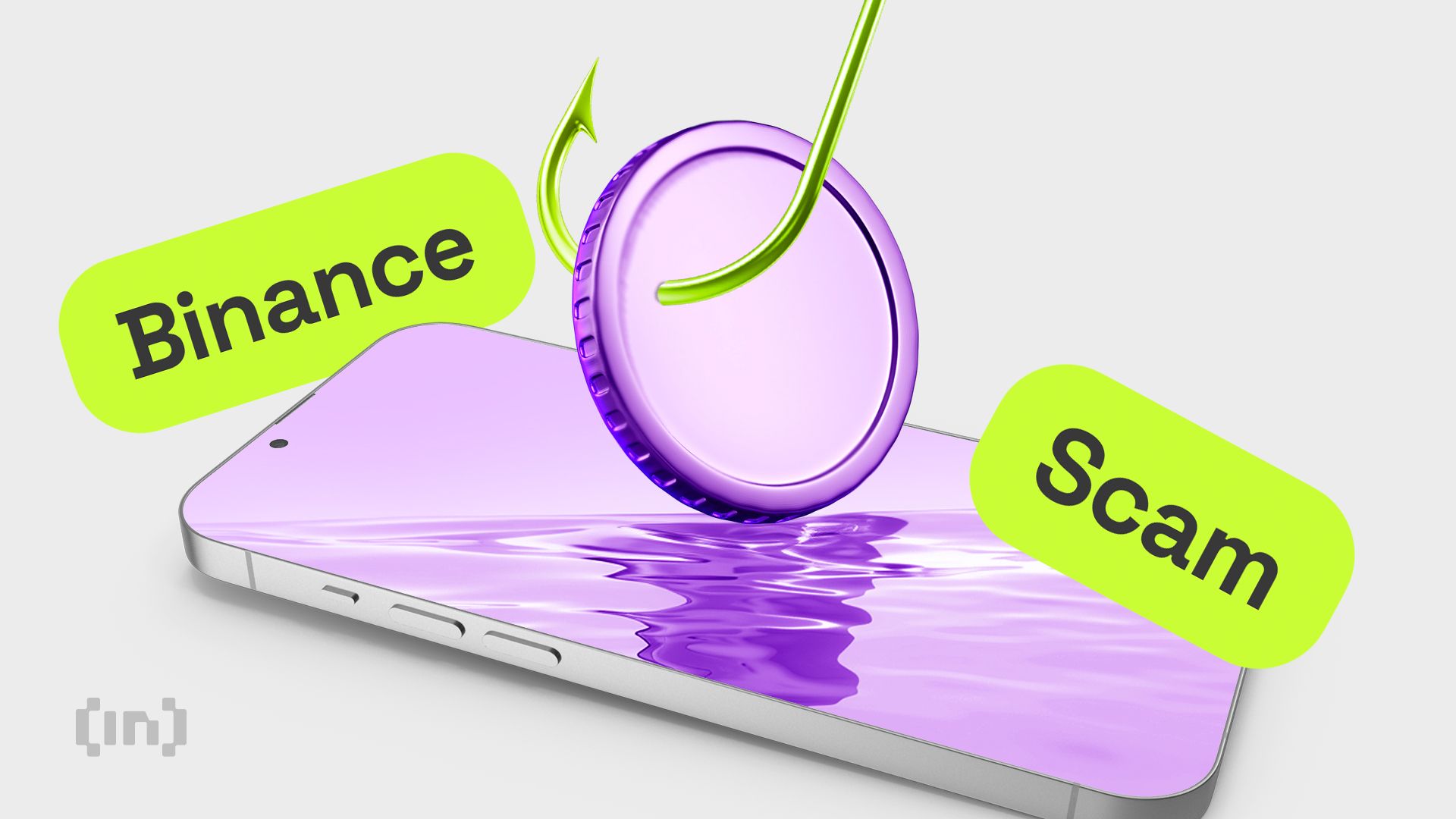
Dozens of Binance users report receiving an alarming wave of phishing text messages that appear genuine. These messages even match the phone number and SMS inbox they regularly see for official Binance updates.
Almost all phishing texts reviewed by BeInCrypto have the same wording and format. This leads us to believe that a particular threat actor or criminal group is targeting Binance users with a sophisticated phishing campaign.
Targeted Phishing Campaign Against Binance Users
The messages often warn of users’ unauthorized account activities—such as a newly added two-factor authentication device.
Most commonly, the phishing messages follow up with a text about an unexpected Binance API pairing with Ledger Live. The recipients are then urged to call a provided phone number.
Some targeted users claim these texts show up in the same thread as their legitimate Binance notifications. This creates confusion and prompts them to engage. Investigations by BeInCrypto reveal a surge in consumer complaints on X (formerly Twitter).

Many users say they were caught off guard because the scam messages originated from the same sender ID used by Binance for authentic notifications.
Meanwhile, the criminals behind this campaign appear to be capitalizing on publicly reported leaks of Binance user data on dark web forums.
Last month, an estimated 230,000 combined user records from Binance and Gemini reportedly appeared for sale on the dark web. Security experts suggest these leaks came through phishing attacks rather than direct system breaches.
The suspected group of threat actors is likely using leaked information—names, phone numbers, and emails—to craft targeted messages that give the illusion of legitimacy.
Also, the pattern seen in the phishing attempts typically involves an urgent “not you?” query. It prompts recipients to call an embedded phone line instead of simply clicking a link.
This method bypasses the more common scenario of phishing links in SMS.
Binance is Extending Anti-Phishing Code to SMS
In an exclusive email to BeInCrypto, Binance’s Chief Security Officer, Jimmy Su, responded to these findings. Su confirmed the company’s awareness of the escalating smishing incidents.
“We are aware of smishing scams on the rise where phishing scammers are impersonating us and other legitimate senders via SMS. These scams appear to be more authentic, tricking users into revealing sensitive information, clicking into phishing links, or making a transfer that result in loss of assets.” Binance’s Chief Security Officer told BeInCrypto.
Su further disclosed that Binance has extended its Anti-Phishing Code to SMS. This feature was originally offered for emails.
The code is a user-defined identifier that appears in official Binance messages, making it easier for recipients to recognize genuine notifications and avoid impostors.
“By incorporating a unique Anti-Phishing code into Binance SMS messages, we are making it significantly harder for scammers to deceive our users,” Su said.
The Anti-Phishing Code has been rolled out to all licensed jurisdictions where Binance operates.
Also, according to Binance, both registered and non-registered users have reported receiving suspicious texts.
Therefore, attackers might be leveraging databases that include phone numbers of individuals not actively using Binance.
BeInCrypto advises users to adopt additional measures, such as verifying transactions directly through Binance’s official app or website, using multifactor authentication, and never sharing credentials over the phone.
Reporting suspicious messages to Binance’s support team is strongly advised.
Individuals are encouraged to confirm official communications by checking for the Anti-Phishing Code and to carefully scrutinize any request to call phone numbers provided in unsolicited messages.
Disclaimer
In adherence to the Trust Project guidelines, BeInCrypto is committed to unbiased, transparent reporting. This news article aims to provide accurate, timely information. However, readers are advised to verify facts independently and consult with a professional before making any decisions based on this content. Please note that our Terms and Conditions, Privacy Policy, and Disclaimers have been updated.
Market
DOGE Spot Outflows Exceed $120 Million in April
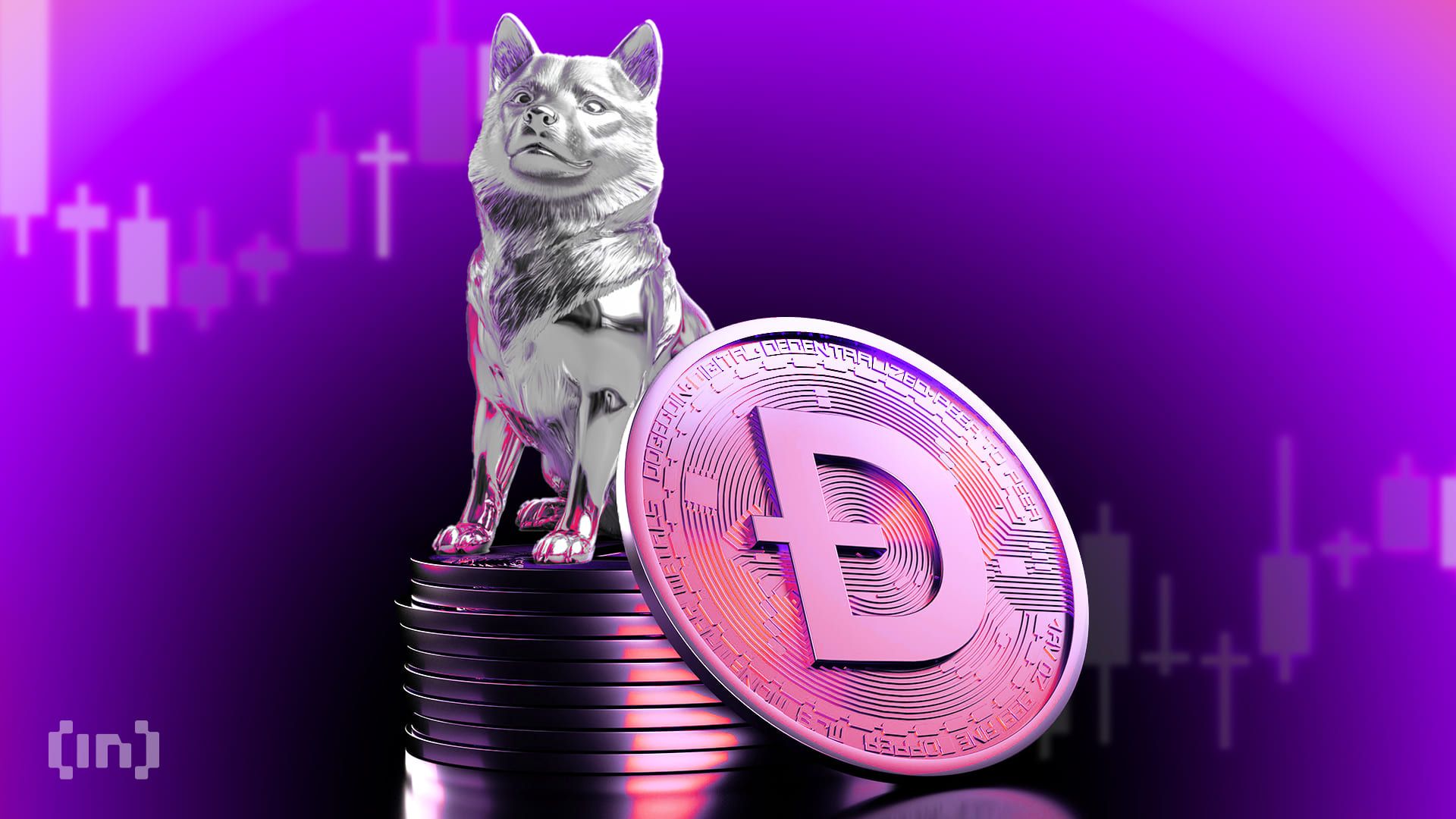
Dogecoin holders have been withdrawing their funds from spot markets in April, with the leading meme coin facing mounting selling pressure.
The lack of new capital flowing into DOGE reflects a decline in investor confidence and adds downward pressure on the altcoin.
Sell-Off Worsens for DOGE as Outflows Outpace Inflows
Since the beginning of April, DOGE has seen a consistent stream of net outflows from its spot market, totaling over $120 million. Net inflows during the same period have been negligible, amounting to less than $5 million per Coinglass.

When an asset records spot outflows, more of its coins or tokens are being sold or withdrawn from the spot market than are being bought or deposited.
This indicates that DOGE investors are losing confidence and opting to liquidate their holdings due to increasingly bearish market conditions.
The persistent outflows from the meme coin over the past two weeks reflect the lack of new demand for the altcoin. If this trend continues, DOGE’s price could remain range-bound or face another decline cycle.
On the technical front, DOGE’s Relative Strength Index (RSI) has continued to trend downward on the daily chart, further confirming the bearish outlook.
At press time, this key momentum indicator, which measures an asset’s oversold and overbought market conditions, is below the 50-neutral line at 47.61.

When an asset’s RSI falls below the center line, bearish momentum strengthens. This suggests that DOGE selling pressure is beginning to outweigh buying interest, signaling a potential dip in the asset’s price.
DOGE Risks Retesting Yearly Lows
With the crypto market’s volatility heightened by Donald Trump’s ongoing trade wars and DOGE’s current struggles to attract fresh investment, the meme coin may test new lows in the near term. If selling pressure strengthens, DOGE could revisit its year-to-date low of $0.12.
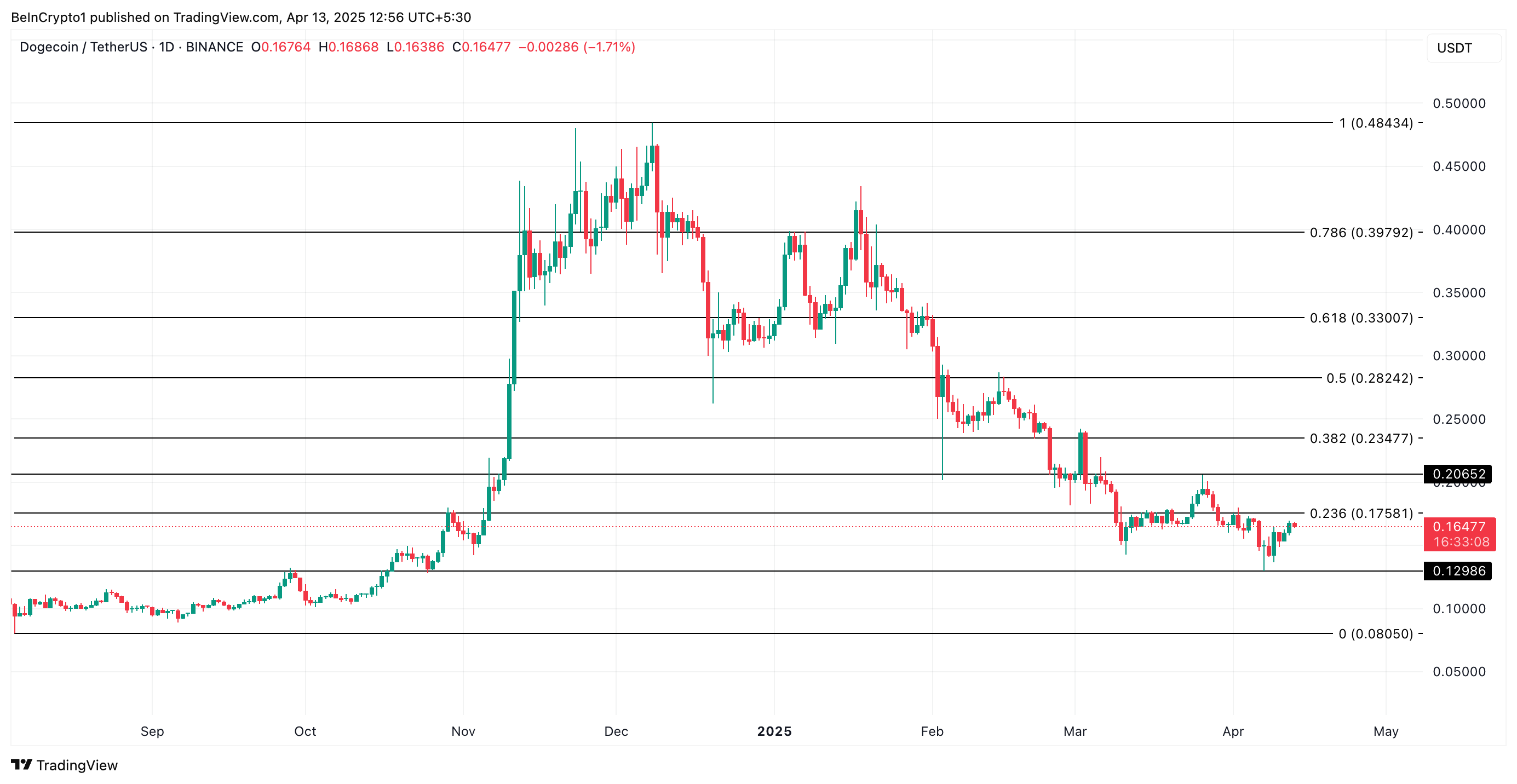
Conversely, a resurgence in new demand for the meme coin will invalidate this bearish outlook. In that scenario, DOGE’s price could break above $0.17 and climb to $0.20.
Disclaimer
In line with the Trust Project guidelines, this price analysis article is for informational purposes only and should not be considered financial or investment advice. BeInCrypto is committed to accurate, unbiased reporting, but market conditions are subject to change without notice. Always conduct your own research and consult with a professional before making any financial decisions. Please note that our Terms and Conditions, Privacy Policy, and Disclaimers have been updated.
Market
PI Coin Recovers 80% From All-time Low — Will It Retake $1?

PI has staged a remarkable comeback after plunging to an all-time low of $0.40 on April 5. Amid a broader market recovery over the past week, the altcoin has seen a resurgence in demand, driving its price up 84% from its recent bottom.
With the bulls attempting to strengthen market control, PI could extend its gains in the short term.
PI Recovers From Crash With Strong Bullish Setup
PI’s Moving Average Convergence Divergence (MACD) indicator has flashed a bullish signal. On the daily chart, the MACD line (blue) crossed above the signal line (orange) on April 5, indicating a positive shift in momentum right after it bottomed at $0.40.
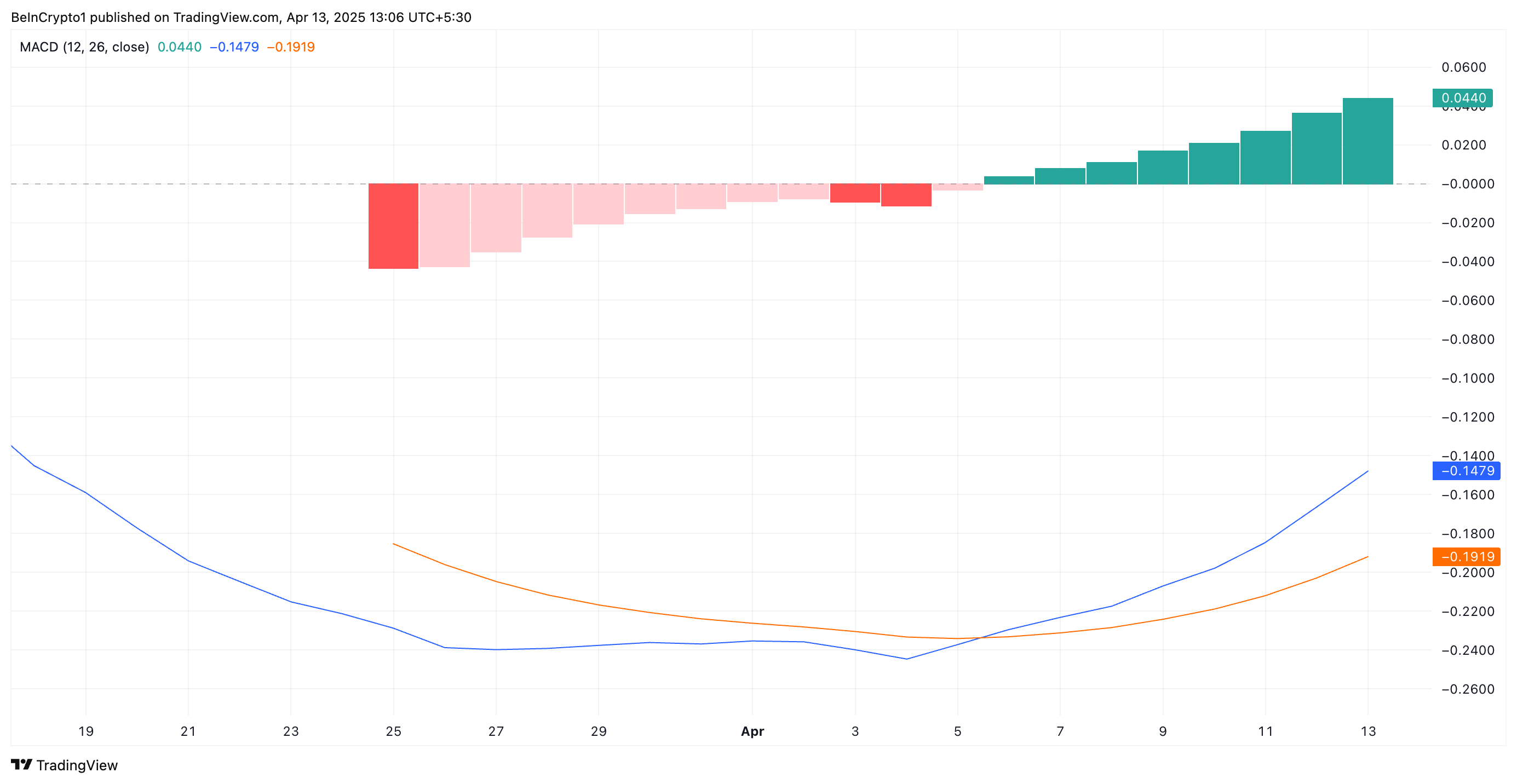
Additionally, the histogram bars, which reflect the strength of that momentum, have gradually increased in size over the past few days, highlighting the growing demand for the altcoin.
When an asset’s MACD is set up this way, upward momentum is building, and buyers are gaining control. PI’s MACD crossover is a bullish signal, suggesting the potential for continued price gains as buying pressure increases.
In addition, PI’s positive Balance of Power (BoP) reflects the growing demand for the altcoin. As of this writing, the indicator is at 0.52.
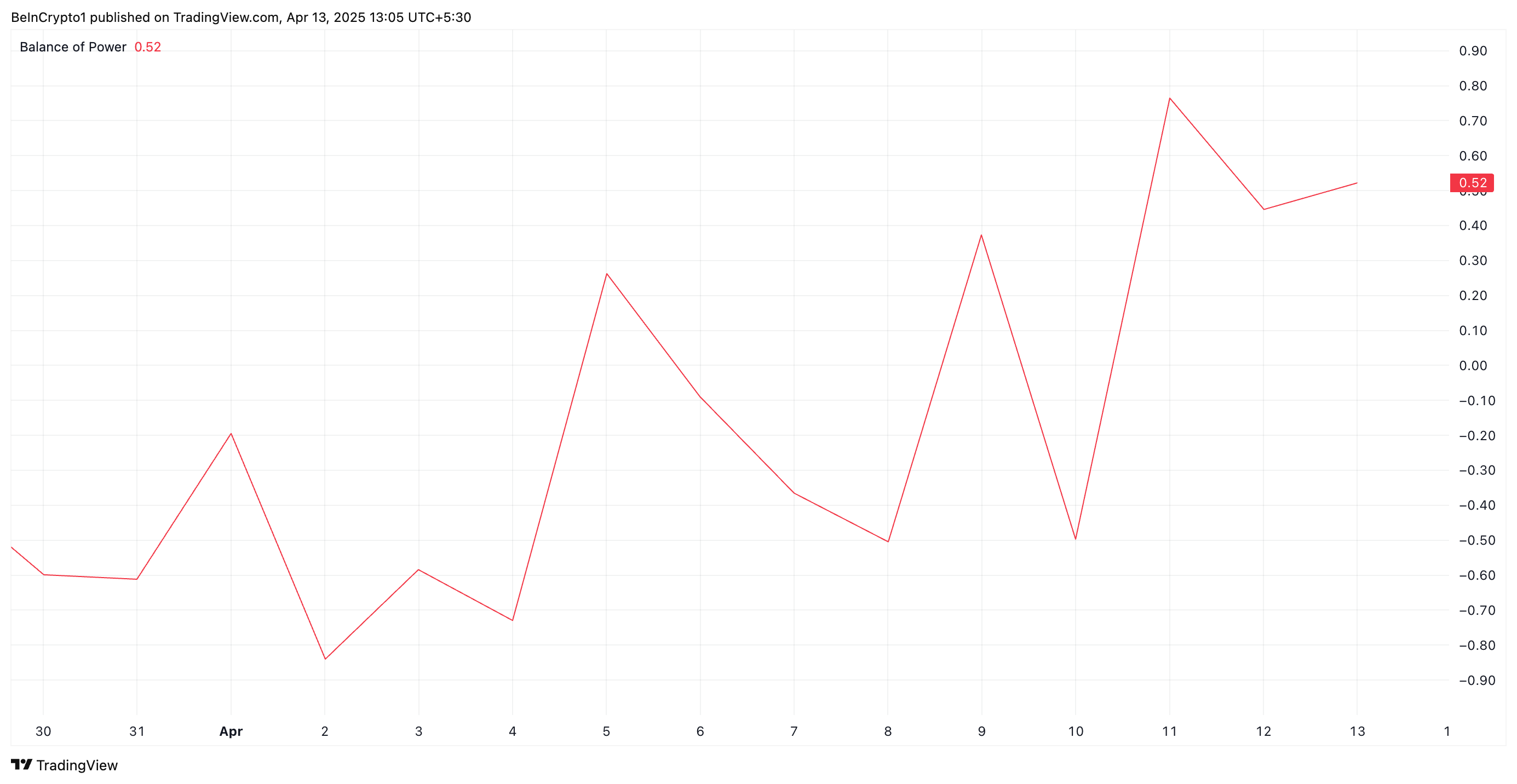
The BoP indicator measures the strength of buyers versus sellers in the market, helping to identify momentum shifts. When its value is positive, buyers are dominating the market over sellers and driving newer price gains.
Is $1 Within Reach?
PI’s ongoing rally has caused its price to trend within an ascending parallel channel. This bullish pattern is formed when an asset’s price consistently moves between two upward-sloping, parallel trendlines.
It signals a sustained uptrend, with PI buyers gradually gaining control while allowing short-term pullbacks. If the rally continues, PI could exchange hands at $0.95.
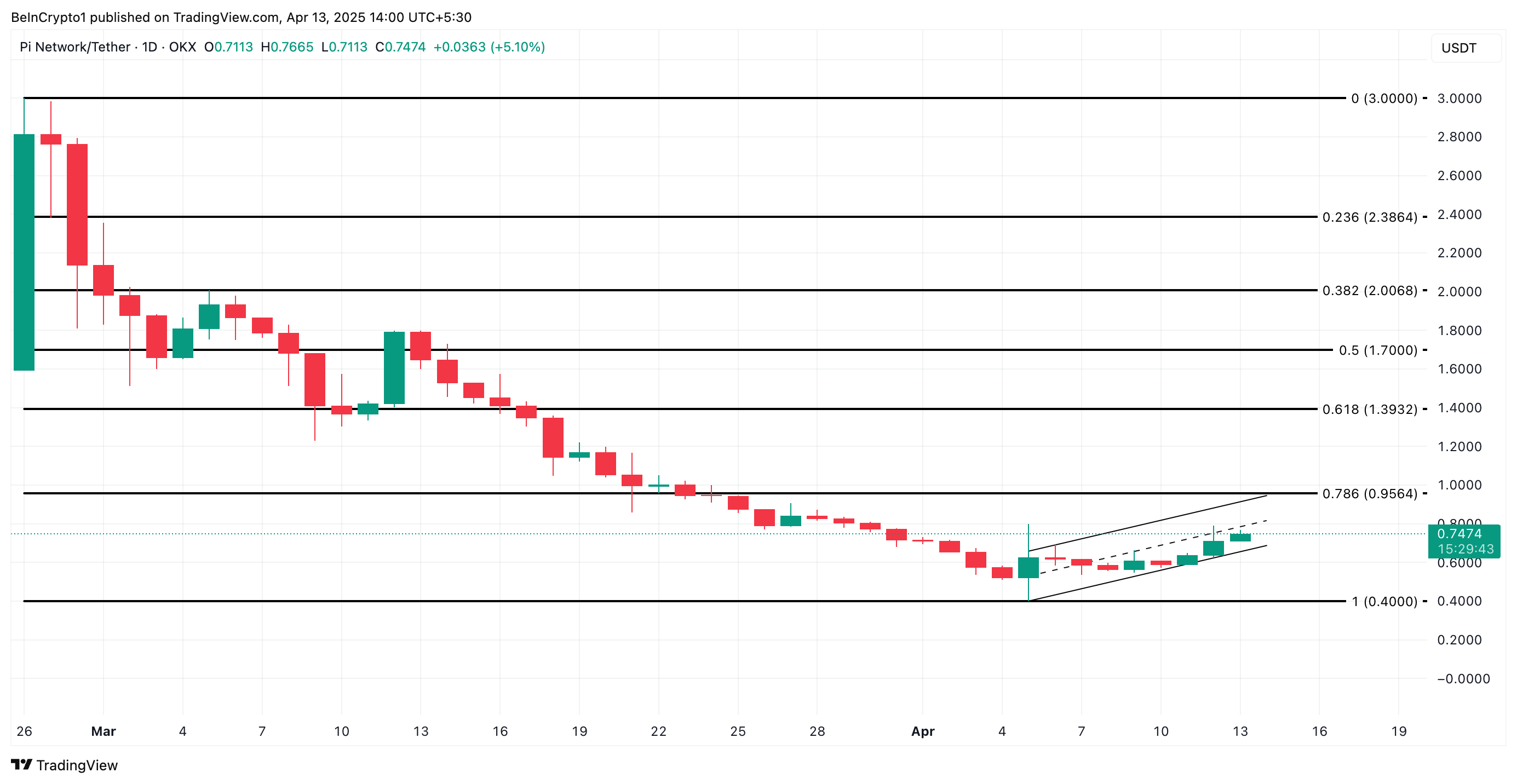
However, if the altcoin reverses its current trend and sheds recent gains, its value could fall to $0.40.
Disclaimer
In line with the Trust Project guidelines, this price analysis article is for informational purposes only and should not be considered financial or investment advice. BeInCrypto is committed to accurate, unbiased reporting, but market conditions are subject to change without notice. Always conduct your own research and consult with a professional before making any financial decisions. Please note that our Terms and Conditions, Privacy Policy, and Disclaimers have been updated.
-

 Market23 hours ago
Market23 hours agoEthereum ETFs See Seventh Consecutive Week of Net Outflows
-

 Bitcoin23 hours ago
Bitcoin23 hours agoBitcoin’s Impact Alarming, Says NY Atty. General—Congress Needs To Act
-
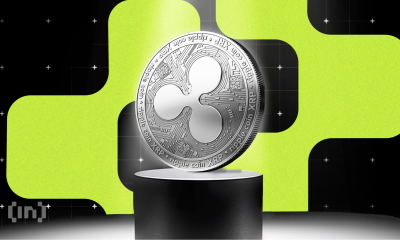
 Market22 hours ago
Market22 hours agoRipple May Settle SEC’s $50 Million Fine Using XRP
-

 Altcoin21 hours ago
Altcoin21 hours agoBankless Cofounder David Hoffman Reveals Strategy To Improve Ethereum Price Performance
-

 Market21 hours ago
Market21 hours agoSolana Bulls Lead 17% Recovery, Targeting $138
-

 Market18 hours ago
Market18 hours agoXRP Price To Hit $45? Here’s What Happens If It Mimics 2017 And 2021 Rallies
-

 Ethereum18 hours ago
Ethereum18 hours agoEthereum (ETH) Consolidates Within Tight Range As Key Support Level Forms
-

 Bitcoin17 hours ago
Bitcoin17 hours agoBitcoin Price Volatility Far Lower Than During COVID-19 Crash — What This Means






















